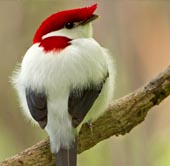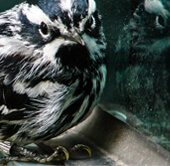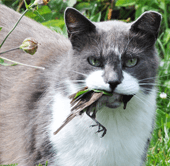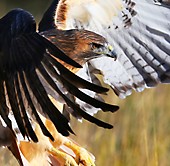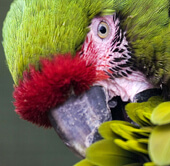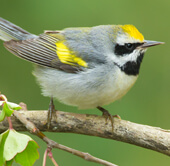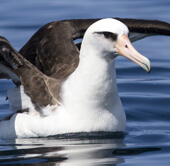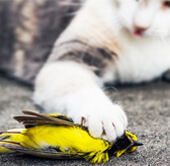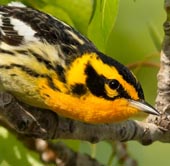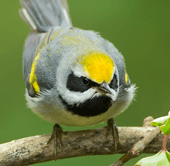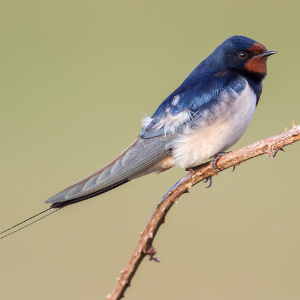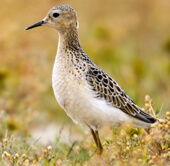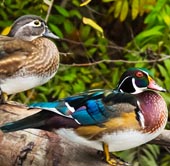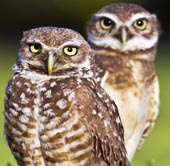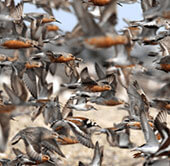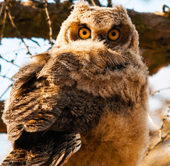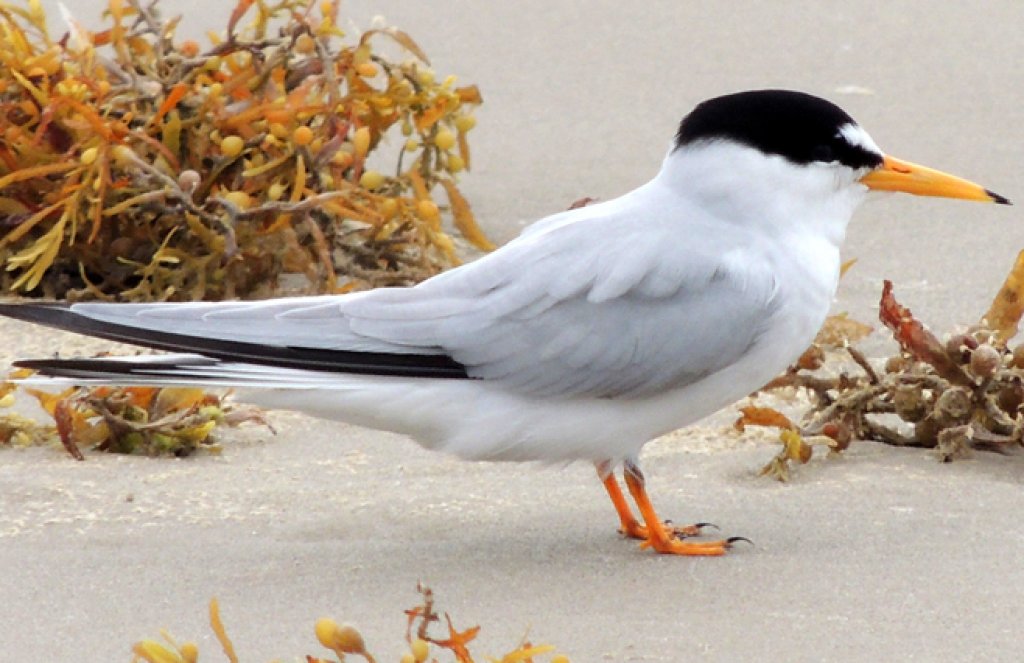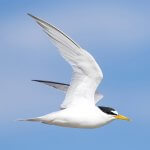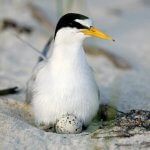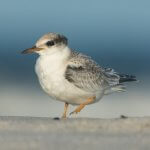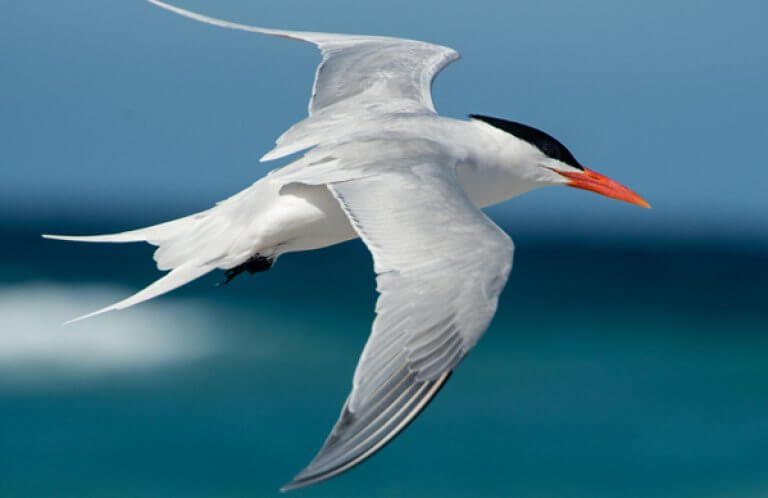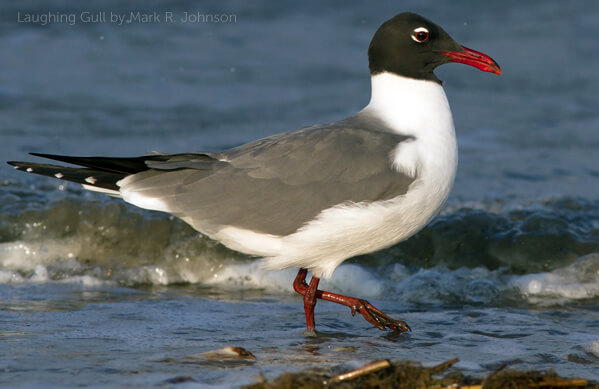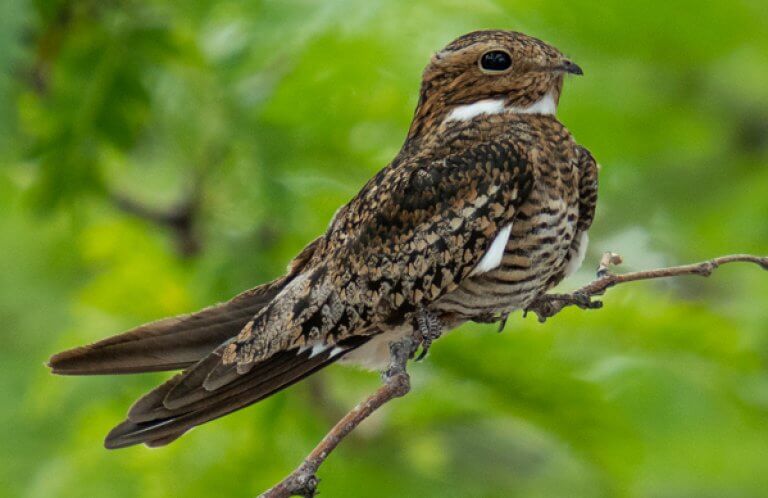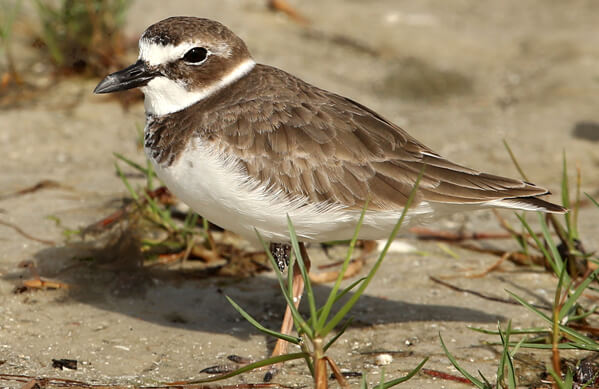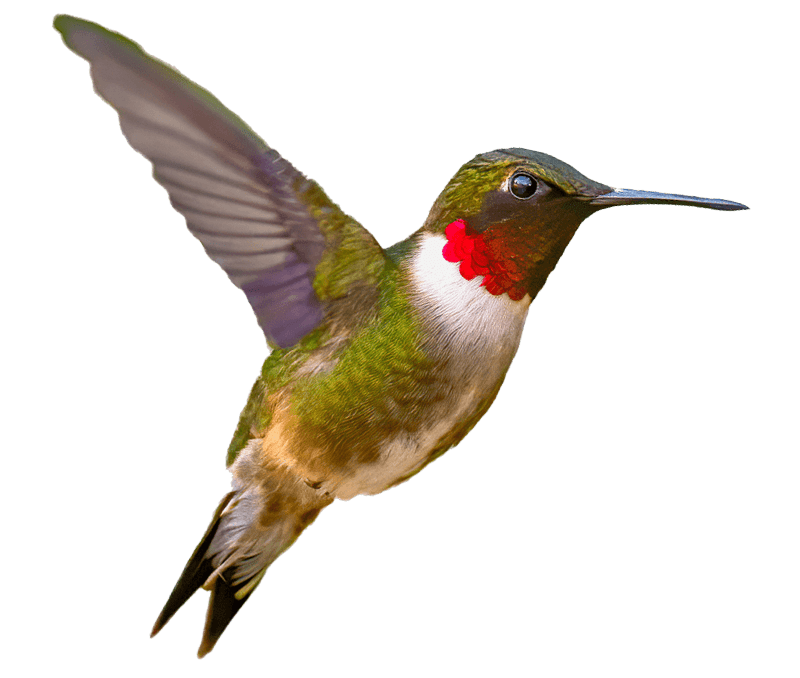About the Least Tern
As its name implies, the Least Tern is the tiniest of North American terns, and one of the continent's smallest fishing birds. Everything about this bird is small scale: Of the terns, it has the shortest tail, daintiest bill, quickest wingbeats, and is the shortest in length — at nine inches, it's 3.5 inches shorter than a Roseate Tern and a full foot shorter than the "mighty" Caspian Tern. The Least Tern is also four inches shorter than a Belted Kingfisher and just a quarter-inch longer than the diminutive Green Kingfisher.
The Least Tern belongs to the genus Sternula, meaning "small tern," a grouping with six other dainty species found in South America, Eurasia, Africa, and Australasia. Like other colonial waterbirds such as the Royal Tern, Black Skimmer, and Laughing Gull, the Least Tern is vulnerable to disturbance and predation at its traditional beach and flats nest sites. But in some areas, Least Terns have changed the narrative on where they raise their young.
A Roof Below Their Heads
In some areas — the state of Florida being one of the most prominent — Least Terns nest on flat gravel rooftops, such as in strip malls or warehouse districts. Other species that sometimes nest on gravel rooftops include the Common Nighthawk, American Oystercatcher, Killdeer, and Black Skimmer.
While this top-level strategy raises the terns and their chicks well above regular terrestrial predators, the artificial substrate has down sides: Hot tar can become stuck in the chicks' down feathers or burn their feet, and people suddenly appearing on the roof to do work can severely disrupt breeding. Depending on the location of the colony and type of roof, nestlings can also fall from rooftops, a threat they'd never face on a beach. In Florida, conservation groups, volunteers, and property managers work together to give rooftop chicks the best odds at survival. Strategies include rooftop fencing and returning fallen young to the colony. Also, the Florida Fish and Wildlife Conservation Commission encourages businesses with rooftop colonies to avoid work atop their buildings during nesting season, and provides signs and guidance.
Songs and Sounds
Terns don't sing, but the Least Tern has a distinctive voice, issuing several squeaky and sharp calls, two of which are easy to memorize:
Listen to both calls here:
Least Tern Breeding and Feeding
Least Terns traditionally nest on sandy beaches or flats. They often breed at the same colony sites each year, but adapt quickly in response to changes, such as the appearance of new suitable habitat or the disappearance of old. Aside from rooftops, other human-made locations that have hosted colonies include dredge-spoil islands and gravel parking lots.
In the lead-up to nesting, pairs perform graceful courtship flights. A silvery fish glinting in his bill, the male flies skyward followed by his mate. Both male and female then glide back toward the ground. Pairs display on the ground as well: For example, a male will strut in a circle around his mate with a fish offering in his bill, his neck stretched exaggeratedly to one side. Fish offerings are also even given during copulation.
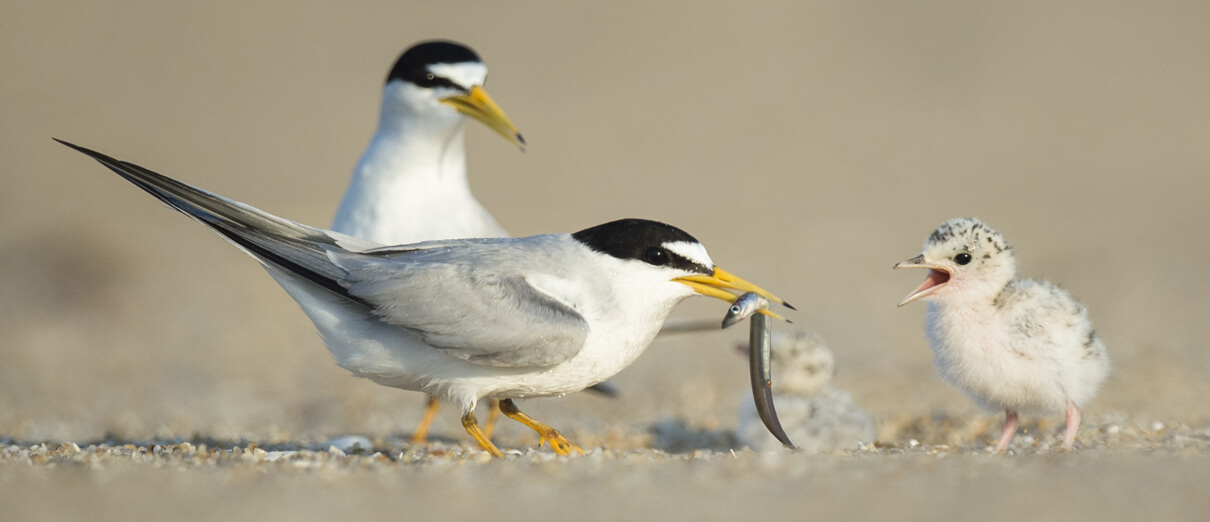
The nest is a shallow scrape in sand, soil, or pebbles. There, the female usually lays two or three dark-splotched eggs. The female and male share incubation duties, although the female usually winds up doing the lion's share. Eggs hatch after about three weeks. The whitish, downy chicks blend with their light surroundings, soon developing peppery patches that lend further camouflage. Both parents feed the young, bringing larger and larger fish as nestlings grow.
Although chicks often leave the nest two days after hatching, they stay close by, until they are able to fly by themselves, a feat usually accomplished by three weeks of age.
Groups of Least Terns patrol over and hover close to the water's surface with quick, flicking wing beats. When prey is sighted, the birds plunge-dive to snatch it. Unlike many larger terns, Least Terns do not submerge entirely below the water's surface while making their catch. Their quarry includes dozens of fish species, including herring, hake, menhaden, and anchovy, as well as some shrimp, insects, and marine worms.
Least Tern Region and Range
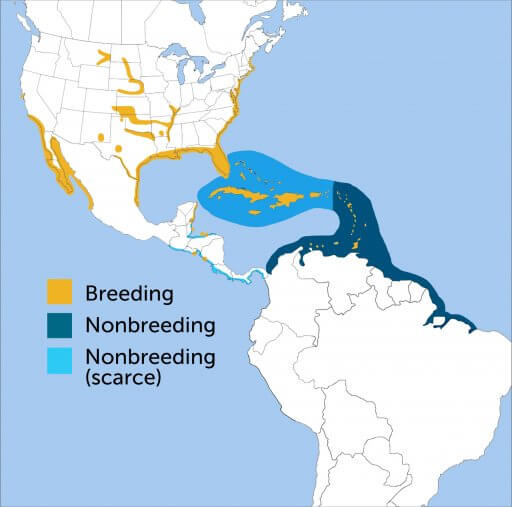
The Least Tern has an extensive breeding range but nests locally, and its colonies are vulnerable to disturbance and predation. On the East Coast, nesting occurs from southern Maine all the way to Mexico's Caribbean coast, and also as far south as some coastal sites in Belize and Honduras. The terns also nest in the interior of the U. S. along the sandy shores of large rivers through most of the Great Plains as far as the Dakotas and eastern Montana. On the West Coast, this species breeds from Central California south along much of Mexico's coastline, to a few spots in El Salvador and Nicaragua. Least Terns also nest throughout the Caribbean, including islands off the coast of Venezuela. The Least Tern winters in the Caribbean, especially off the coast of northern South America, from Colombia east, then into Atlantic waters off northern Brazil. Regular winter sightings also occur along the Pacific coast from southern Mexico to Panama.
Conservation of the Least Tern
Because the Least Tern usually nests on the ground, it's vulnerable to disturbance by people and attacks by cats, dogs, and other predators, which can destroy a significant portion of a colony's eggs and chicks. The species is classified as threatened or as a species of concern in most states where it occurs. The “Interior” race, the form nesting along major river systems in the continent's interior, was federally listed as Endangered in the 1980s, after its population had dropped severely. This population was removed from the federal endangered list in 2021, after rebounding in response to conservation efforts, including fencing and signposting key breeding sites.

Help support ABC's conservation mission!
The Least Tern is a priority species for ABC. Inland, we worked with diverse government partners to improve Interior Least Tern habitat and monitoring. Our staff organized the first range-wide population survey of the Interior Least Tern. On the Gulf Coast, our Beach-nesting Birds Program and many partners are cooperating to bring back populations of Least Tern and other vulnerable beach-nesting birds including the Black Skimmer, Wilson's Plover, and Snowy Plover. Since its 2020 launch by ABC and partners including Gulf Coast Bird Observatory, the SPLASh (Stopping Plastics and Litter Along Shorelines) program has removed over 30,000 pounds of trash that put birds including the Least Tern at risk.
Get Involved
Policies enacted by the U.S. Congress and federal agencies have a huge impact on seabirds. You can help shape these rules for the better by telling lawmakers to prioritize birds and bird-friendly measures. To get started, visit ABC's Action Center.
Plastics pose a deadly threat to seabirds around the world. You can help seabirds by reducing your daily use of plastics. To learn more and get started, visit our Plastics page.
American Bird Conservancy and partners are creating predator-free nest sites for vulnerable seabird species, reducing fishery impacts, and much more. This is a monumental undertaking, requiring the support of many, and you can help by making a gift today.

